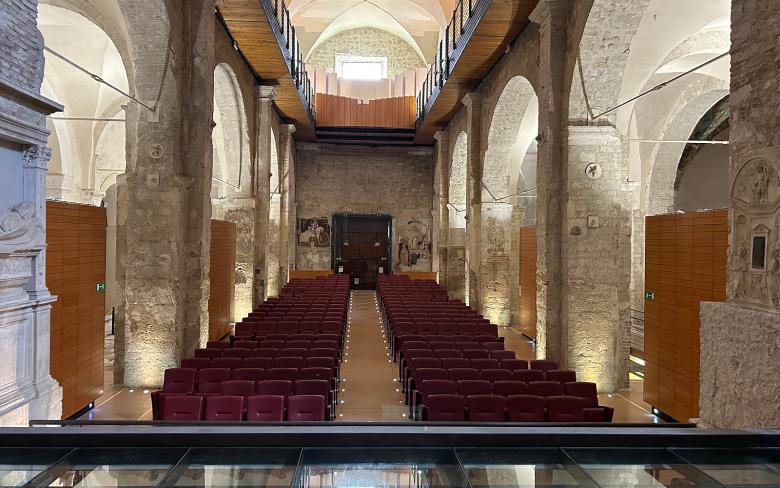Part of it was made of brick while other parts are tunnels carved into the mountains. It follows the slope of the hills, goes through three mountains with as many tunnels and then over bridges to cross to the other side of various rivers. It is fed by six sources and goes from Sant'Urbano, through the old city and then into a large basin from which it is distributed where needed.
The Cardona Bridge, which is along its path, has been declared the Centre of Italy by the Military Geographical Institute as it is equidistant from the north and south, and the east and west of the country.
The Formina aqueduct can be explored along a 700 m long tunnel with an average width of from 45 to 50 cm and height of from 170 to 120 cm. Its ceiling is graced with snow-white stalactites and it ends in an 18 m deep well carved into the stone earth from where, via a steep spiral staircase, one resurfaces.
For information on guided tours: www.narnisotterranea.it





























.png/bfc70537-6645-2c6e-3498-5d0e7556e240?width=780)
